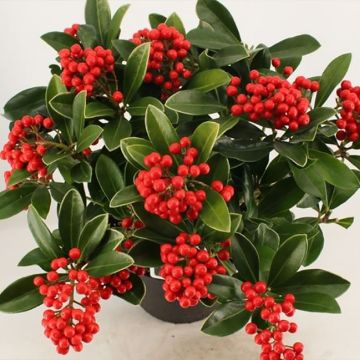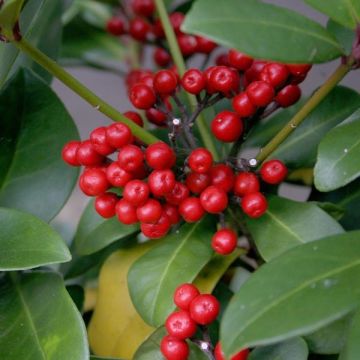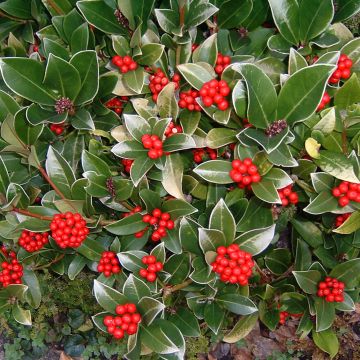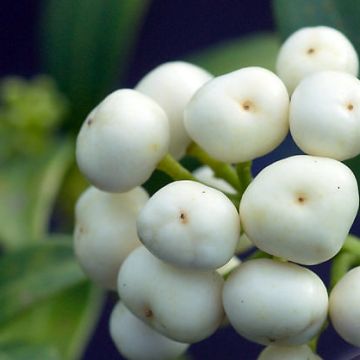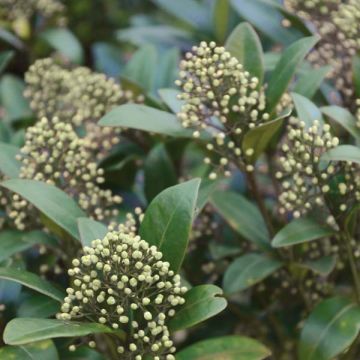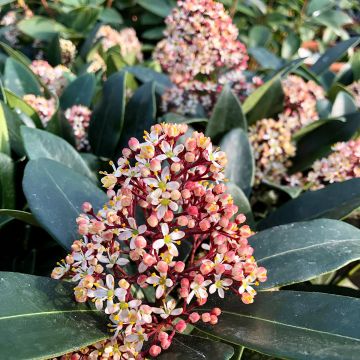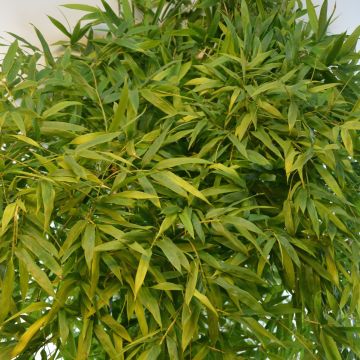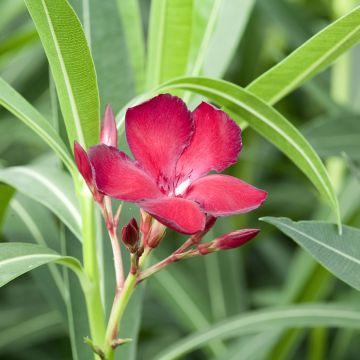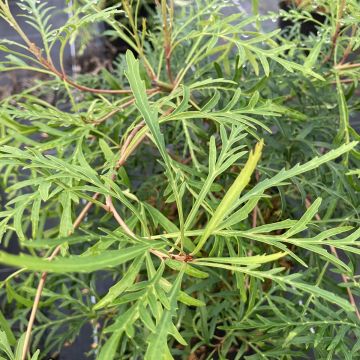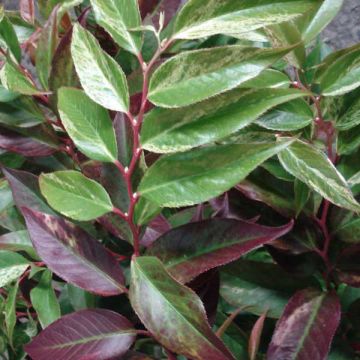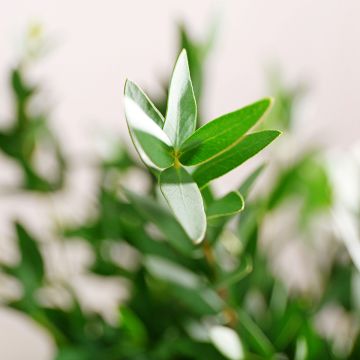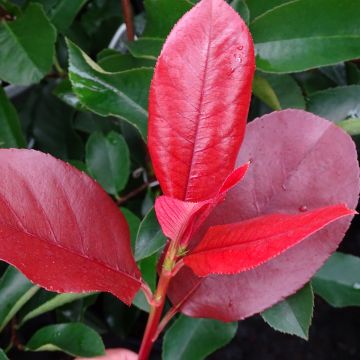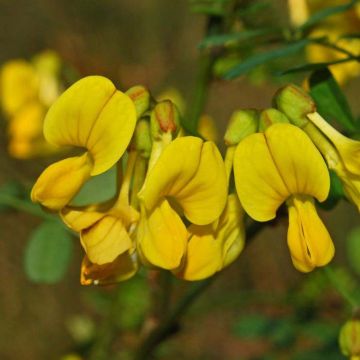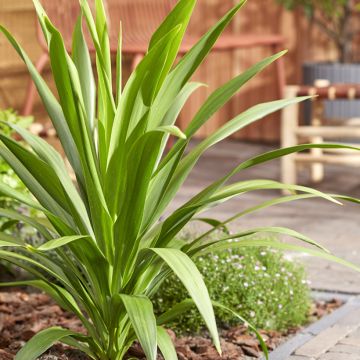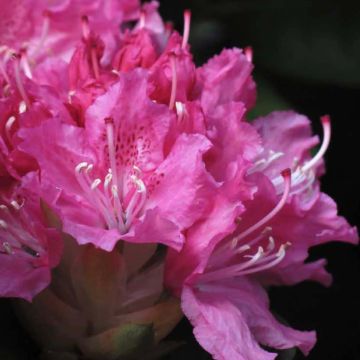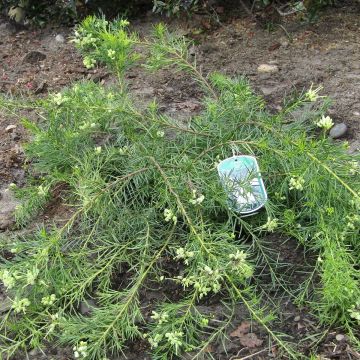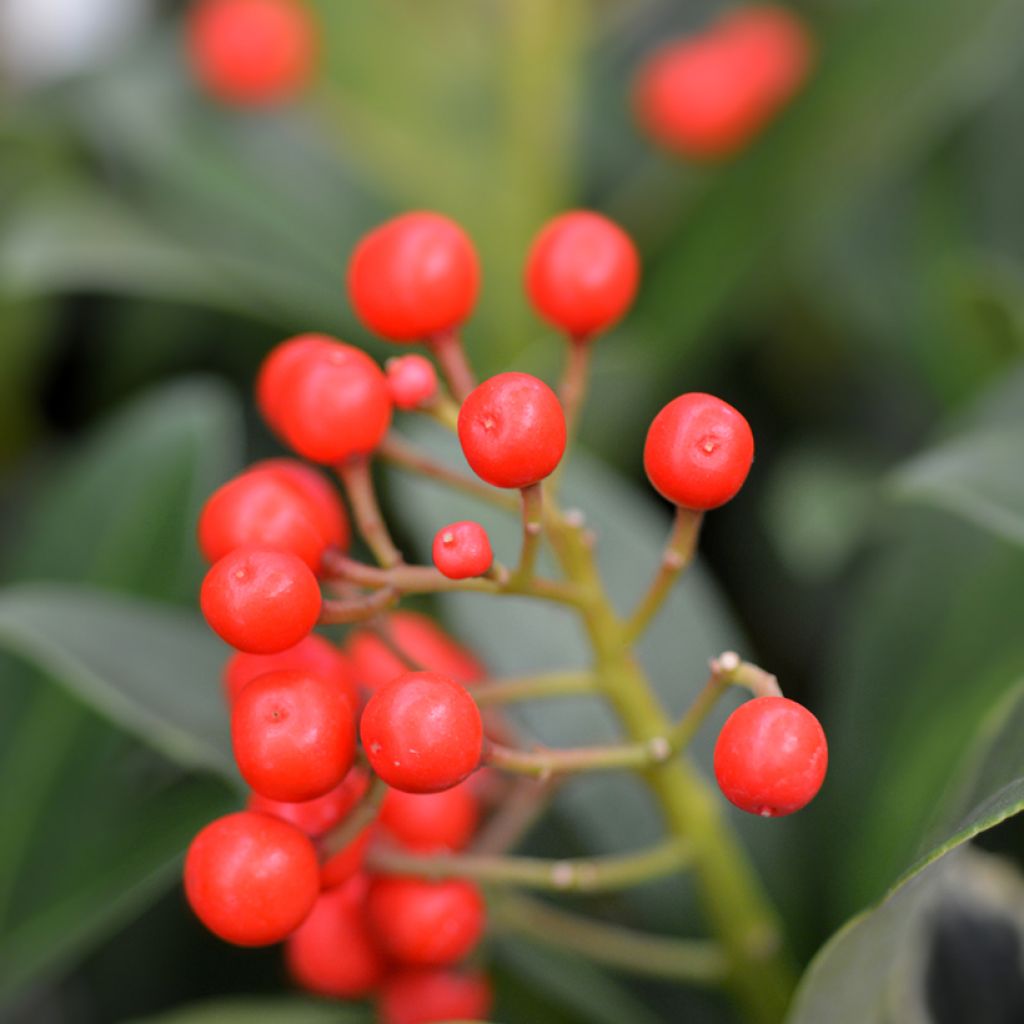

Skimmia japonica Pabella - Japanese Skimmia
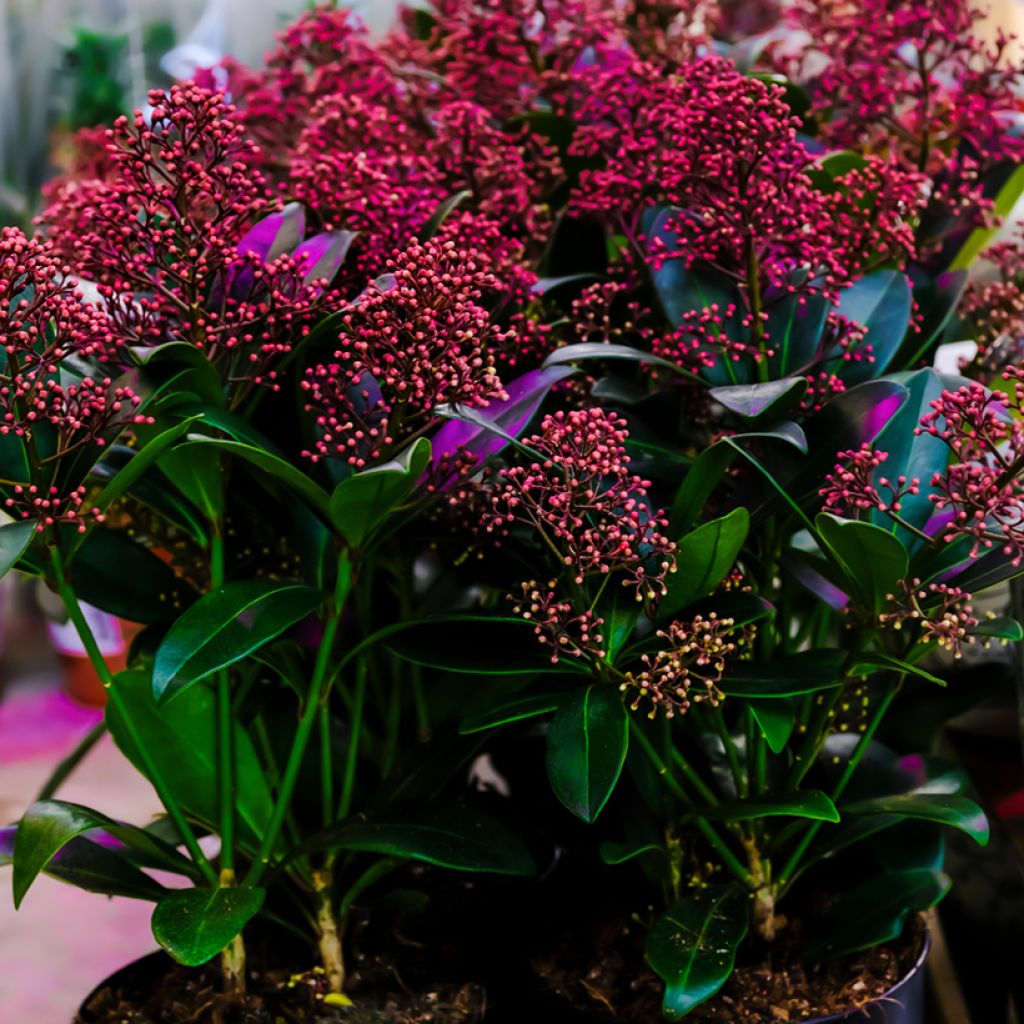

Skimmia japonica Pabella - Japanese Skimmia
Skimmia japonica Pabella - Japanese Skimmia
Skimmia japonica Pabella
Japanese Skimmia, Skimmia, Japanese Skimmia Japonica
Why not try an alternative variety in stock?
View all →This plant carries a 24 months recovery warranty
More information
We guarantee the quality of our plants for a full growing cycle, and will replace at our expense any plant that fails to recover under normal climatic and planting conditions.
From €5.90 for pickup delivery and €6.90 for home delivery
Express home delivery from €8.90.
Does this plant fit my garden?
Set up your Plantfit profile →
Description
Skimmia japonica 'Pabella' is a very compact bush, with its beautiful glossy green evergreen foliage providing ornamental appeal throughout the year. In spring, it produces panicles of very small fragrant white flowers. This honey-producing flowering attracts pollinating insects, and after pollination by a male plant, it develops into clusters of small spherical bright red fruits in autumn. These highly decorative fruits stay on the plant throughout winter. Skimmia is ideal for enhancing semi-shaded and shaded areas, in moist, acidic soils. It is quite hardy and can be easily grown in pots in regions that are otherwise too cold, allowing it to be sheltered in winter.
Skimmia belongs to the Rutaceae family, which includes over 150 diverse genera, including trees, bushes, and herbaceous plants. In addition to citrus trees, this botanical family includes ornamental plants such as Choysia and Ptelea (Samarian Elm). The Skimmia genus is native to the Himalayan regions and Southeast Asia, while the species S. japonica originates from Japan, the Russian island of Sakhalin, Taiwan, and possibly also from the large island of Luzon in the Philippines. There, it grows in forests, often as an epiphyte, particularly on old Cryptomerias in Japan, from where it was introduced to Europe in 1861 by the famous botanist Robert Fortune. It is a dioecious bush, with female and male flowers borne on separate plants, featuring early, fragrant flowering and decorative fruits (on female plants).
'Pabella' is a natural female mutation of the male variety 'Rubella', discovered in the nursery of Roland van der Werf in the Netherlands. Introduced to the market in 2017, it immediately received a "Glazen Tulp Award" from the Flora Holland organisation. This bush is indeed very attractive, primarily for its nearly spherical habit, being as wide as it is tall, and less spreading than most other varieties. With slow growth, it reaches approximately 80 cm in all directions within ten years of planting, and at maturity, it may eventually exceed one metre. Its foliage consists of evergreen, oblong leaves measuring 7-8 cm long, leathery, and dark green with a glossy surface. They are alternately arranged on the branches which are also dark green. In March-April, panicles of very small white flowers develop, slightly fragrant but less than the male varieties. Although less abundant than in 'Rubella', the flowering is nonetheless well accentuated by the dark foliage. The flowers will be fertilised if a male plant is planted nearby (it is estimated that one male plant can fertilise five females), such as 'Rubella' or Skimmia japonica 'Kew Green'. This will allow you to enjoy the profusion of flowers and the stronger fragrance of the male plant, as well as to obtain decorative fruits from 'Pabella'. In autumn, clusters of very bright red spheres develop, forming a magnificent contrast with the foliage. These highly ornamental fruits remain on the plant for a long time, often until the beginning of the following year, thus prolonging the display.
Skimmia japonica 'Pabella' is a true gem for small gardens and shaded spaces. Easy to cultivate, its only requirement is a lime-free, moist soil, without excess water. If that is not possible, you can simply grow it in a pot, which will also allow you to shelter it in case of severe frost. In the garden, it will thrive in a peat soil bed, alongside Rhododendrons and Azaleas that will offer you their lush spring flowering. Also consider Kalmias or mountain laurels, which are less well-known but equally attractive with their very original flowers in May and June. For summer, Hydrangea serrata 'Blue Bird', a flat-headed Hydrangea, will delight you with its inflorescences ranging from pink to blue depending on the acidity of your soil. And to accompany the fruiting of your little Skimmia, nothing beats an Autumn Camellia (Camellia sasanqua), which will complete your four-season display.
Report an error about the product description
Plant habit
Flowering
Foliage
Botanical data
Skimmia
japonica
Pabella
Rutaceae
Japanese Skimmia, Skimmia, Japanese Skimmia Japonica
Cultivar or hybrid
Other Skimmia
Planting and care
Plant Skimmia japonica 'Pabella' in partial shade in humus-bearing, moist, but well-drained and preferably acidic soil. Avoid sunlight and alkaline, poor, and dry soils, as well as heavy soils, to prevent chlorosis and brown spots. Choose a location sheltered from strong winds and cold draughts. Dig a hole measuring 50 cm on all sides and mix ericaceous soil with the existing soil (50/50). Soak the root ball for fifteen minutes in a bucket before planting to thoroughly wet it, then place it in the hole, backfill around it, and water generously. This plant does not tolerate drought, so be sure to water regularly. If the soil is naturally moist and your climate is not too hot, it may more easily withstand sunny exposure.
If your soil is chalky or the climate is too cold in winter, you can grow this bush in a large pot, using slightly acidic potting compost, and especially ensuring good drainage. Install a layer of gravel at the bottom to prevent any water stagnation.
As 'Pabella' is a female clone, it will produce fruit provided that a male clone such as 'Rubella' or 'Kew Green' is planted nearby.
Planting period
Intended location
Care
This item has not been reviewed yet - be the first to leave a review about it.
Evergreen shrubs
Haven't found what you were looking for?
Hardiness is the lowest winter temperature a plant can endure without suffering serious damage or even dying. However, hardiness is affected by location (a sheltered area, such as a patio), protection (winter cover) and soil type (hardiness is improved by well-drained soil).

Photo Sharing Terms & Conditions
In order to encourage gardeners to interact and share their experiences, Promesse de fleurs offers various media enabling content to be uploaded onto its Site - in particular via the ‘Photo sharing’ module.
The User agrees to refrain from:
- Posting any content that is illegal, prejudicial, insulting, racist, inciteful to hatred, revisionist, contrary to public decency, that infringes on privacy or on the privacy rights of third parties, in particular the publicity rights of persons and goods, intellectual property rights, or the right to privacy.
- Submitting content on behalf of a third party;
- Impersonate the identity of a third party and/or publish any personal information about a third party;
In general, the User undertakes to refrain from any unethical behaviour.
All Content (in particular text, comments, files, images, photos, videos, creative works, etc.), which may be subject to property or intellectual property rights, image or other private rights, shall remain the property of the User, subject to the limited rights granted by the terms of the licence granted by Promesse de fleurs as stated below. Users are at liberty to publish or not to publish such Content on the Site, notably via the ‘Photo Sharing’ facility, and accept that this Content shall be made public and freely accessible, notably on the Internet.
Users further acknowledge, undertake to have ,and guarantee that they hold all necessary rights and permissions to publish such material on the Site, in particular with regard to the legislation in force pertaining to any privacy, property, intellectual property, image, or contractual rights, or rights of any other nature. By publishing such Content on the Site, Users acknowledge accepting full liability as publishers of the Content within the meaning of the law, and grant Promesse de fleurs, free of charge, an inclusive, worldwide licence for the said Content for the entire duration of its publication, including all reproduction, representation, up/downloading, displaying, performing, transmission, and storage rights.
Users also grant permission for their name to be linked to the Content and accept that this link may not always be made available.
By engaging in posting material, Users consent to their Content becoming automatically accessible on the Internet, in particular on other sites and/or blogs and/or web pages of the Promesse de fleurs site, including in particular social pages and the Promesse de fleurs catalogue.
Users may secure the removal of entrusted content free of charge by issuing a simple request via our contact form.
The flowering period indicated on our website applies to countries and regions located in USDA zone 8 (France, the United Kingdom, Ireland, the Netherlands, etc.)
It will vary according to where you live:
- In zones 9 to 10 (Italy, Spain, Greece, etc.), flowering will occur about 2 to 4 weeks earlier.
- In zones 6 to 7 (Germany, Poland, Slovenia, and lower mountainous regions), flowering will be delayed by 2 to 3 weeks.
- In zone 5 (Central Europe, Scandinavia), blooming will be delayed by 3 to 5 weeks.
In temperate climates, pruning of spring-flowering shrubs (forsythia, spireas, etc.) should be done just after flowering.
Pruning of summer-flowering shrubs (Indian Lilac, Perovskia, etc.) can be done in winter or spring.
In cold regions as well as with frost-sensitive plants, avoid pruning too early when severe frosts may still occur.
The planting period indicated on our website applies to countries and regions located in USDA zone 8 (France, United Kingdom, Ireland, Netherlands).
It will vary according to where you live:
- In Mediterranean zones (Marseille, Madrid, Milan, etc.), autumn and winter are the best planting periods.
- In continental zones (Strasbourg, Munich, Vienna, etc.), delay planting by 2 to 3 weeks in spring and bring it forward by 2 to 4 weeks in autumn.
- In mountainous regions (the Alps, Pyrenees, Carpathians, etc.), it is best to plant in late spring (May-June) or late summer (August-September).
The harvesting period indicated on our website applies to countries and regions in USDA zone 8 (France, England, Ireland, the Netherlands).
In colder areas (Scandinavia, Poland, Austria...) fruit and vegetable harvests are likely to be delayed by 3-4 weeks.
In warmer areas (Italy, Spain, Greece, etc.), harvesting will probably take place earlier, depending on weather conditions.
The sowing periods indicated on our website apply to countries and regions within USDA Zone 8 (France, UK, Ireland, Netherlands).
In colder areas (Scandinavia, Poland, Austria...), delay any outdoor sowing by 3-4 weeks, or sow under glass.
In warmer climes (Italy, Spain, Greece, etc.), bring outdoor sowing forward by a few weeks.

































